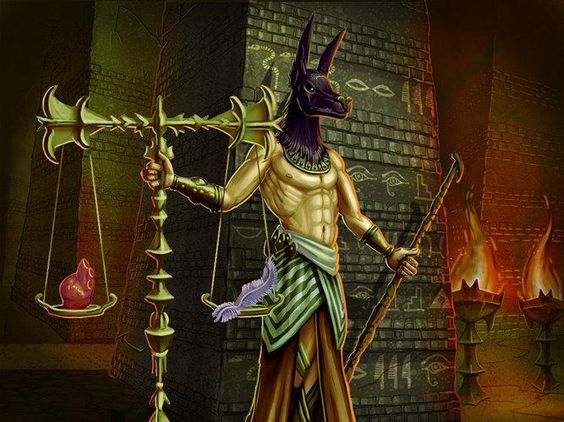PYTHIA, or Pythoness. — Webster dismisses the word very briefly by saying that it was the name of one who delivered the oracles at the Temple of Delphi, and “any female supposed to have the spirit of divination in her — a witch,” which is neither complimentary, exact, nor just. A Pythia, upon the authority of Plutarch, Iamblichus, Lamprias, and others, was a nervous sensitive; she was chosen from among the poorest class, young and pure. Attached to the temple, within whose precincts she had a room, secluded from every other, and to which no one but the priest, or seer, had admittance, she had no communications with the outside world, and her life was more strict and ascetic than that of a Catholic nun. Sitting on a tripod of brass placed over a fissure in the ground, through which arose intoxicating vapors, these subterranean
Page xxxix
exhalations penetrating her whole system produced the prophetic mania. In this abnormal state she delivered oracles. She was sometimes called ventriloqua vates, the ventriloquist-prophetess.
The ancients placed the astral soul of man, [[psuche]], or his self-consciousness, in the pit of the stomach. The Brahmans shared this belief with Plato and other philosophers. Thus we find in the fourth verse of the second Nabhanedishtha Hymn it is said: “Hear, O sons of the gods (spirits) one who speaks through his navel (nabha) for he hails you in your dwellings!”
Many of the Sanscrit scholars agree that this belief is one of the most ancient among the Hindus. The modern fakirs, as well as the ancient gymnosophists, unite themselves with their atman and the Deity by remaining motionless in contemplation and concentrating their whole thought on their navel. As in modern somnambulic phenomena, the navel was regarded as “the circle of the sun,” the seat of internal divine light. Is the fact of a number of modern somnambulists being enabled to read letters, hear, smell, and see, through that part of their body to be regarded again as a simple “coincidence,” or shall we admit at last that the old sages knew something more of physiological and psychological mysteries than our modern Academicians? In modern Persia, when a “magician” (often simply a mesmerizer) is consulted upon occasions of theft and other puzzling occurrences, he makes his manipulations over the pit of his stomach, and so brings himself into a state of clairvoyance. Among the modern Parsis, remarks a translator of the Rig-vedas, there exists a belief up to the present day that their adepts have a flame in their navel, which enlightens to them all darkness and discloses the spiritual world, as well as all things unseen, or at a distance. They call it the lamp of the Deshtur, or high priest; the light of the Dikshita (the initiate), and otherwise designate it by many other names.
SAMOTHRACES. — A designation of the Fane-gods worshipped at Samothracia in the Mysteries. They are considered as identical with the Kabeiri, Dioskuri, and Korybantes. Their names were mystical — denoting Pluto, Ceres or Proserpina, Bacchus, and AEsculapius or Hermes.
SHAMANS, or Samaneans. — An order of Buddhists among the Tartars, especially those of Siberia. They are possibly akin to the philosophers
Page xl
anciently known as Brachmanes, mistaken sometimes for Brahmans. They are all magicians, or rather sensitives or mediums artificially developed. At present those who act as priests among the Tartars are generally very ignorant, and far below the fakirs in knowledge and education. Both men and women may be Shamans.
SOMA. — This Hindu sacred beverage answers to the Greek ambrosia or nectar, drunk by the gods of Olympus. A cup of kykeon was also quaffed by the mysta at the Eleusinian initiation. He who drinks it easily reaches Bradhna, or place of splendor (Heaven). The soma-drink known to Europeans is not the genuine beverage, but its substitute; for the initiated priests alone can taste of the real soma; and even kings and rajas, when sacrificing, receive the substitute. Haug shows by his own confession, in his Aytareya Brahmanan, that it was not the Soma that he tasted and found nasty, but the juice from the roots of the Nyagradha, a plant or bush which grows on the hills of Poona. We were positively informed that the majority of the sacrificial priests of the Dekkan have lost the secret of the true soma. It can be found neither in the ritual books nor through oral information. The true followers of the primitive Vedic religion are very few; these are the alleged descendants from the Rishis, the real Agnihotris, the initiates of the great Mysteries. The soma-drink is also commemorated in the Hindu Pantheon, for it is called the King-Soma. He who drinks of it is made to participate in the heavenly king, because he becomes filled with it, as the Christian apostles and their converts became filled with the Holy Ghost, and purified of their sins. The soma makes a new man of the initiate; he is reborn and transformed, and his spiritual nature overcomes the physical; it gives the divine power of inspiration, and develops the clairvoyant faculty to the utmost. According to the exoteric explanation the soma is a plant, but, at the same time it is an angel. It forcibly connects the inner, highest “spirit” of man, which spirit is an angel like the mystical soma, with his “irrational soul,” or astral body, and thus united by the power of the magic drink, they soar together above physical nature, and participate during life in the beatitude and ineffable glories of Heaven.

Moe is the founder of GnosticWarrior.com. He is a father, husband, author, martial arts black belt, and an expert in Gnosticism, the occult, and esotericism.

![How another contrarywise before his death saw a book containing his sins, which was shown him by devils [704-709 A.D.] | Book 5 | Chapter 12 How another contrarywise before his death saw a book containing his sins, which was shown him by devils [704-709 A.D.] | Book 5 | Chapter 12](https://www.gnosticwarrior.com/wp-content/plugins/contextual-related-posts/default.png)



